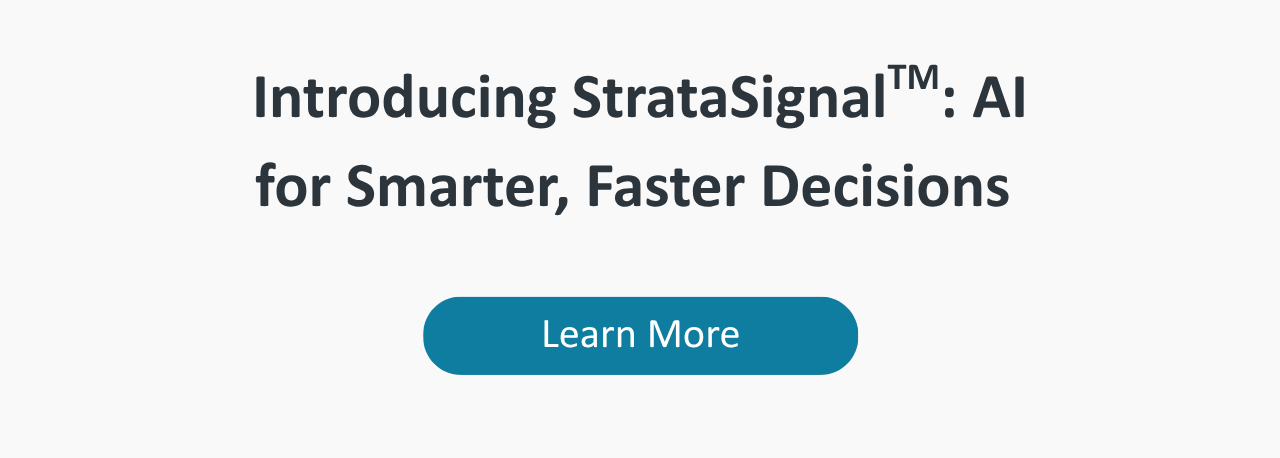U.S. Hospitals and Health Systems Hit with Long-running Increases in Medical Supply and Drug Expenses, and Bad Debt and Charity Care, According to New Strata Report
Analysis Highlights Enduring Challenges as Industry Anticipates Impacts of Federal Policy Changes
CHICAGO – May 8, 2025 – Hospitals and health systems across the country saw notable growth in medical supply and drug expenses as well as increases in bad debt and charity care in recent years — all factors that could be exacerbated in the coming months as the healthcare industry feels the effects of federal tariffs and possible changes to the Medicaid program, according to a new report from Strata Decision Technology.
Non-labor expenses have long been on the rise for hospitals nationwide, with total non-labor expense increasing year-over-year (YOY) each month for more than three years, according to Strata data. Medical supply and drug expenses, in particular, have steadily grown as a share of overall expenses. Medical supply expense as a percent of total expense increased from 7.2% in the first quarter of 2023 to 8.0% in Q1 of this year. At the same time, drug expense as a percent of total expense rose from 4.1% in Q1 2023 to 4.4% in Q1 2025.
On a per-patient basis, drug expense per adjusted patient day increased 8.4% from $99.73 in Q1 2023 to $108.07 in Q1 2025. Medical supply expense per adjusted patient day rose 6.7% from $194.04 to $207.11 over the same period.
“Hospitals and health systems have battled persistent expense increases for years across both labor and non-labor categories,” said Steve Wasson, chief data and intelligence officer at Strata Decision Technology. “Now — with more than two-thirds of medical devices used in the U.S. manufactured outside of the country — tariffs and other federal policy changes could further drive up costs for pharmaceuticals, syringes, personal protective equipment, and other medical supplies and devices that healthcare professionals rely on every day to care for patients.”
U.S. health systems also saw growth in charity and bad debt deductions in recent years. The median charity deduction for health systems increased 5.4% from Q1 2024 to Q1 2025, and jumped 21.4% in Q1 2025 versus the first quarter of 2023. Bad debt deductions rose over the same periods. The median health system bad debt deduction increased 9.2% from Q1 2024 to Q1 2025 and 16.9% versus Q1 2023.
For the nation's hospitals, charity deductions for the first quarter of this year rose 7.6% from Q1 2024 and jumped 24.5% compared to Q1 of 2023. Bad debt deductions at hospitals decreased slightly at 0.9% from the first quarter of 2024 to Q1 of this year, but were up 15.3% compared to two years ago in Q1 of 2023.
Possible changes to the Medicaid program being discussed in Congress could contribute to further increases in bad debt and charity care for hospitals and health systems. As of Q1 2025, the data show that Medicaid accounts for 12% or more of revenue for most U.S. hospitals, depending on the region. Hospitals in the Midwest have the lowest share of Medicaid revenue at 11.1%, while hospitals in the West have the largest, with Medicaid accounting for 14.4% of revenue.
Looking at organizations by size, hospitals with the highest levels of annual operating expense at more than $1 billion also have the highest share of Medicaid as a percent of total revenue at 16.5%. Hospitals in the lowest operating expense category of $50 million or less have the least share of Medicaid as a percent of total revenue at 10.9%.
The share of Medicaid revenue also varies widely by service line. Neonatology has the largest share at 37.4% followed by normal newborn at 36.0% and behavioral health at 31.6%. The breast health service line has the lowest share of Medicaid as a percent of total revenue compared to other service lines at just 5.6%.
About the Data
The report uses data from Strata’s StrataSphere® and Comparative Analytics database. Comparative Analytics offers access to near real-time data drawn from more than 135,000 physicians from over 10,000 practices and 139 specialty categories, and from 500+ unique departments across more than 1,600 hospitals. Comparative Analytics also provides data and comparisons specific to a single organization for visibility into how their market is evolving. StrataSphere is a unique and comprehensive data-sharing platform that helps providers leverage the power of a network that represents approximately 25% of all provider spend in U.S. healthcare. This report incorporates data from more than 600 hospitals with StrataJazz® Decision Support.
About Strata Decision Technology
Strata Decision Technology provides a cloud-based platform for software and service solutions to help organizations better analyze, plan, and perform in support of their missions. With the combination of Syntellis Performance Solutions’ Axiom solutions, more than 2,300 organizations rely on Strata to provide their financial analytics, planning, and performance solutions. Strata has been named the market leader for Business Decision Support for 18 consecutive years. By uniting these two industry leaders, Strata continues to deliver market-leading solutions and world-class service, with an increased focus on accelerating innovation. For more information, please go to www.stratadecision.com.
Strata Social Networks
LinkedIn: Strata Decision Technology
Media contact:
Sally Brown, Inkhouse

